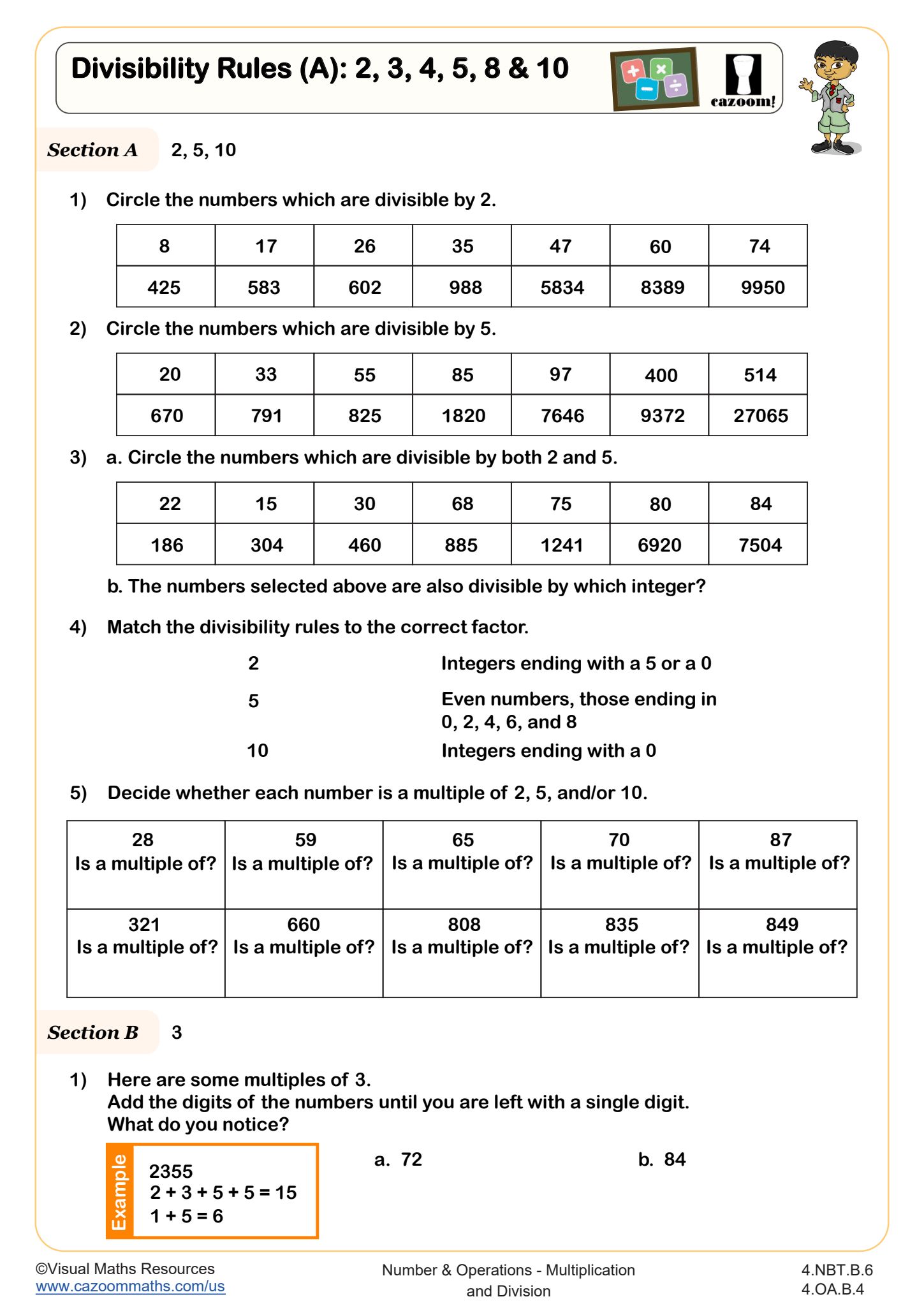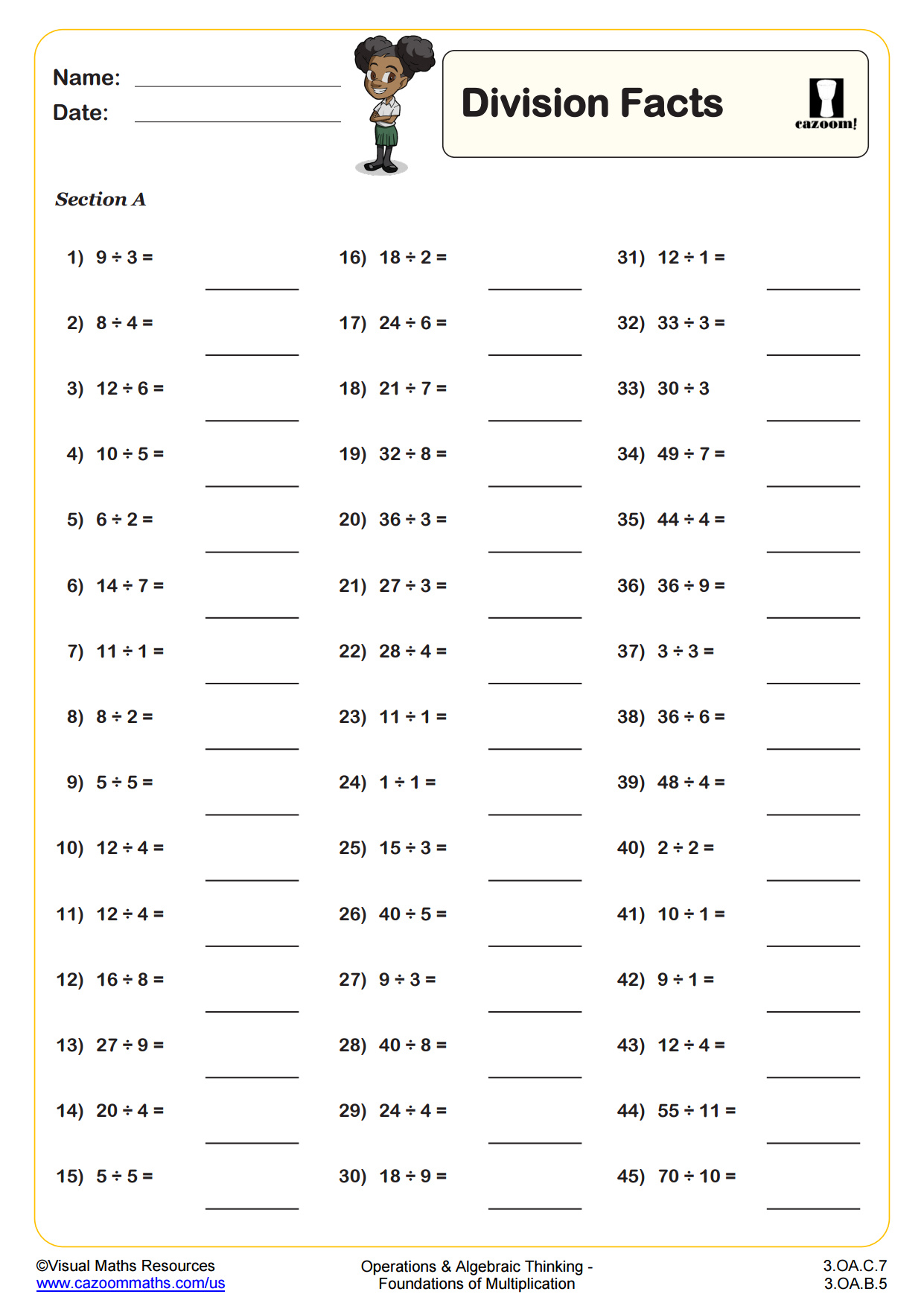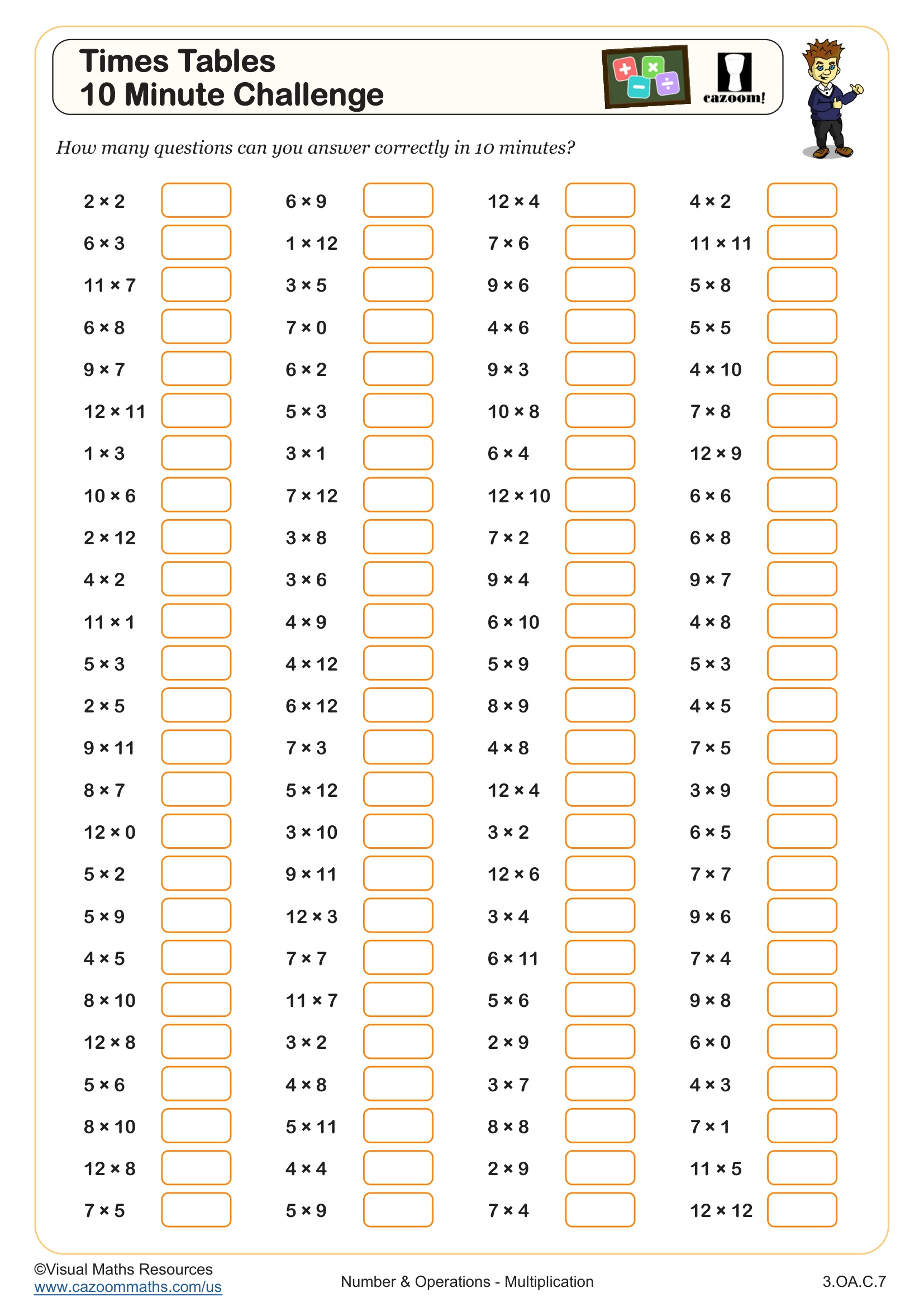Divisibility Rules (B): 7, 9, 11 WORKSHEET
Suitable for Grades: 4th Grade
CCSS: 4.NBT.B.6, 4.OA.B.4
CCSS Description: Find whole-number quotients and remainders with up to four-digit dividends and one-digit divisors, using strategies based on place value, the properties of operations, and/or the relationship between multiplication and division. Illustrate and explain the calculation by using equations, rectangular arrays, and/or area models.
Find all factor pairs for a whole number in the range 1–100. Recognize that a whole number is a multiple of each of its factors. Determine whether a given whole number in the range 1–100 is a multiple of a given one-digit number. Determine whether a given whole number in the range 1–100 is prime or composite.
Find all factor pairs for a whole number in the range 1–100. Recognize that a whole number is a multiple of each of its factors. Determine whether a given whole number in the range 1–100 is a multiple of a given one-digit number. Determine whether a given whole number in the range 1–100 is prime or composite.
Divisibility Rules (B): 7, 9, 11 WORKSHEET DESCRIPTION
This worksheet strengthens students’ ability to test divisibility using rules for 7, 9, and 11, helping them recognise number properties and develop logical reasoning.
Section A introduces the rule for divisibility by 7, where students multiply the last digit by 5 and add it to the remaining digits, repeating the process to determine divisibility.
Section B focuses on divisibility by 9, guiding learners to find the sum of the digits and check whether the result is a multiple of 9.
Section C explains how to test divisibility by 11 by alternating subtraction and addition of digits.
In Section D, students apply all three rules to a mixed list of numbers and classify them based on which rules they satisfy. This section encourages reasoning and deduction by identifying numbers divisible by one, two, or all three of the given factors.
Section A introduces the rule for divisibility by 7, where students multiply the last digit by 5 and add it to the remaining digits, repeating the process to determine divisibility.
Section B focuses on divisibility by 9, guiding learners to find the sum of the digits and check whether the result is a multiple of 9.
Section C explains how to test divisibility by 11 by alternating subtraction and addition of digits.
In Section D, students apply all three rules to a mixed list of numbers and classify them based on which rules they satisfy. This section encourages reasoning and deduction by identifying numbers divisible by one, two, or all three of the given factors.
-7-9-11.jpg?w=3840)

-Combining-Test-%20for-Composite-Factors.jpg?w=3840)

